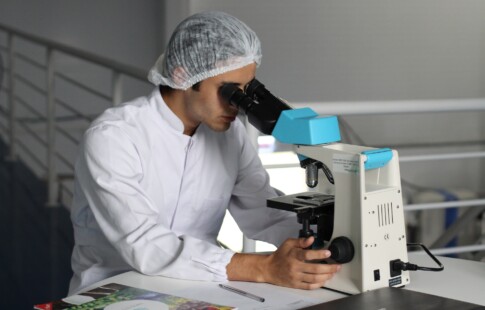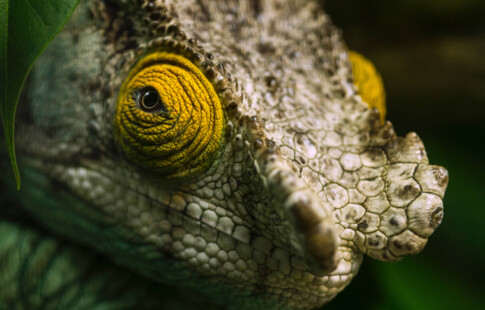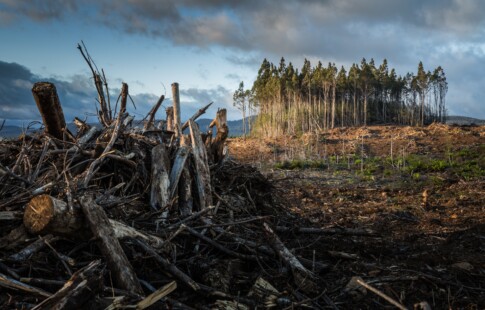
Could AI Save Endangered Species?
We are reader-supported. When you buy through links on our site, we may earn affiliate commission.
As animal populations across the world continue to decline, efforts to protect endangered species are increasingly urgent. The scale of the issue is difficult to comprehend given the rapid rate of extinction. In northern Kenya alone, the number of reticulated giraffes has decreased by up to 70% in the past 30 years.
Regardless of the challenges, conservation professionals are doing everything in their power to ensure the survival of endangered wildlife. Fortunately, they have access to new technologies and methods of conservation with incredible promise. The potential of AI to save endangered species is particularly notable.
Of course, when the average person hears the words, “artificial intelligence,” their first thought usually isn’t wildlife conservation. But the impressive functionality of AI technology has made it useful for far more than self-driving cars and programs for predictive analysis. It has value elsewhere, for conservationists.
With that in mind — how can conservation organizations integrate artificial intelligence to increase the likelihood of success? What do their AI-driven projects look like, and what significance do they have for the future of conservation? These questions have fascinating answers, and we’ll explore them in greater detail below.
The Application of AI for Conservation Efforts
Artificial intelligence has a broad spectrum of applications across a range of diverse industries. You might associate it with a virtual assistant like Siri or Alexa, or even business and workflow automation if your employer uses that type of platform. These are all familiar examples of AI technology, the kind you see every day.
When it comes to conservation efforts, the stakes are higher. Artificial intelligence takes on new meaning, not as a tool to simplify basic tasks, but as a safeguard for the protection and preservation of animal populations. Conservation professionals achieve this goal through a number of innovative methods.
Deep-learning specialty companies such as Nuerala have programmed AI to recognize a variety of animal species, like rhinos and elephants. Drones can collect real-time footage and sort through it with assistance from these AI-driven systems, using the technology to save wildlife and bring poachers to justice.
Other organizations have employed AI technology for facial mapping. Software like “ChimpFace” can identify chimpanzees on social media and e-commerce websites, searching for photos with links to wildlife trafficking. In doing so, they can reduce the instances of this type of illegal activity on the internet.
Similar software like “LemurFaceID” serves the same purpose, helping researchers find trafficked lemurs in photographs and combat the practice through increased awareness. With the immense value of artificial intelligence, many organizations have incorporated AI technology into their conservation projects.
The Giraffe Conservation Foundation and Wildbook
As mentioned earlier, the number of reticulated giraffes in northern Kenya have dropped over the past three decades. Across the rest of Africa, giraffe populations have fallen by 40% in the same period of time, down to less than 100,000 individuals. Naturally, conservationists have taken action to confront the problem.
Wild Me, a conservation tech nonprofit, has developed an amazing software program they’ve named, “Wildbook.” Similar in many ways to Neurala’s system, Wildbook can automatically identify individual animals by their coat patterns and other hallmark traits, like fluke or ear outlines.
In coordination with the Giraffe Conservation Foundation, researchers have used Wildbook to assess the population of giraffes in different regions. They started with photographs, which they uploaded with location data to the GiraffeSpotter database. In a short amount of time, they had the information they needed.
San Diego Zoo’s Jenna Stacey-Dawes participated in the research, saying, “Before a population assessment wasn’t something you could do in a weekend. It’s incredible… It’s been really helpful in allowing us to work faster and understand the population better than we ever really could have before.
“With the collective effort of conservationists, park rangers and tourists using GiraffeSpotter, Stacey-Dawes and her colleagues can access a huge data set which was previously unavailable. The application of AI and associated technologies will protect species in need of help and hold poachers accountable for their crimes.
The Future of AI-Driven Conservation Efforts
It’s safe to speculate that we’ll see more conservation projects with AI in the decade to come. As software like ChimpFace and LemurFaceID prove their value, and Wildbook continues to help conservation professionals, these systems and similar technologies will see greater adoption in future initiatives.
That said, technology has positive and negative aspects, and organizations need to show caution when integrating these advanced tools. But for the most part, tech-driven practices are beneficial for the preservation of endangered species, and artificial intelligence is a prime example which supports that fact.
Will AI Save Endangered Species?
With the right implementation, AI can save endangered species and further the mission of conservation professionals. As of now, they’ve only explored a small fraction of the potential of artificial intelligence, but one thing is certain. In the years to come, AI will play an important role in the protection of wildlife.
Share on
Like what you read? Join other Environment.co readers!
Get the latest updates on our planet by subscribing to the Environment.co newsletter!
About the author
Jane Marsh
Starting from an early age, Jane Marsh loved all animals and became a budding environmentalist. Now, Jane works as the Editor-in-Chief of Environment.co where she covers topics related to climate policy, renewable energy, the food industry, and more.





